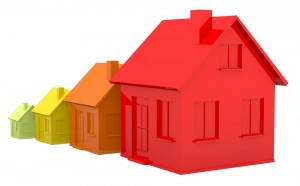The 2013 Inman Agent Reboot conference simplified the hottest trends in technology for real estate professionals. While at the Dallas venue we captured tons of technology apps and tips, tried out several, and decided to share our favorites with you.
There were so many outstanding tips and techniques we decided to present them in a 3-part series showcasing three main categories:
- Lead Management
- Video Marketing + Visual Impact Tools
- Productivity
Lead Management Tools & Tips

Boomerang for Gmail – Have you ever received an email lead and responded right away but received zero response? Often the unresponsive prospect simply drops off the radar. Boomerang reminds agents to continue follow up with specific hard-to-reach prospects. Users can also formulate and schedule email messages for future delivery dates to stay proactive, maximizing lead conversion.
Rapportive for Gmail – Have you ever received an Internet lead that provided only an email address? Ever wonder what type of person is on the other end? Rapportive for Gmail gathers details from the prospect’s internet footprint and forwards that info to your inbox. You can review their aggregated social profile to learn what information might add value or which property attributes to emphasize. You can also harvest details to customize follow-up, build relationships and close more transactions. Lead Management (Tip): What to Say?—What can you possibly say to get an email prospect to finally reply? Researchers have found the number one most effective response is: “I have important information you requested regarding 123 Main St. Call me as soon as possible.”
The next segment on Video marketing and visual Impact tools will highlight 5power tools that deliver the wow plus tips on how to improve your photos and videos from Videolicious CEO, Matt Singer.
For information on effective ways to manage institutional or individual portfolios nationwide, or to shop for real estate visit First Preston HT. Don’t forget to ‘like’ us on Facebook and follow us on Twitter.



 may certainly be underway, challenges remain for homebuilders. NAHB Chief Economist David Crowe reemphasized the need for more readily available building materials, credit, and buildable lots for construction of homes, as these hurdles continue to hinder homebuilder efforts. He noted the uptrend in home values is another contributing factor supporting the recovery of the U.S. housing market. The National Association of REALTORS® (NAR) reported recently in their Pending Home Sales Index that they are upgrading median price growth projections to 10 percent in 2013. Positive job growth figures re-enforce builder confidence.
may certainly be underway, challenges remain for homebuilders. NAHB Chief Economist David Crowe reemphasized the need for more readily available building materials, credit, and buildable lots for construction of homes, as these hurdles continue to hinder homebuilder efforts. He noted the uptrend in home values is another contributing factor supporting the recovery of the U.S. housing market. The National Association of REALTORS® (NAR) reported recently in their Pending Home Sales Index that they are upgrading median price growth projections to 10 percent in 2013. Positive job growth figures re-enforce builder confidence. buyers’ enthusiasm, as evidenced by the uptick in homes under contract in the Pending Homes Sales Index. In fact, Yun is upgrading NAR predictions calling for a 10 percent increase in the median sales price of existing homes. That would mean a median home price of $195,000. The market hasn’t seen escalations in median prices like this since the beginning of the boom back in 2005. With most markets experiencing high buyer affordability, Yun said we are experiencing some “fence jumping”—i.e.: proverbial fence sitters are finally making a buying move after taking stock of the rising rates and prices. This is good news for the sellers; as increased values mean fewer under-water mortgages.
buyers’ enthusiasm, as evidenced by the uptick in homes under contract in the Pending Homes Sales Index. In fact, Yun is upgrading NAR predictions calling for a 10 percent increase in the median sales price of existing homes. That would mean a median home price of $195,000. The market hasn’t seen escalations in median prices like this since the beginning of the boom back in 2005. With most markets experiencing high buyer affordability, Yun said we are experiencing some “fence jumping”—i.e.: proverbial fence sitters are finally making a buying move after taking stock of the rising rates and prices. This is good news for the sellers; as increased values mean fewer under-water mortgages.
 ake a huge leap forward, the volume of permits requested by builders continues to demonstrate U.S. consumers’ desire to build and own new homes. The rainy season might also be a contributing factor in the lack of home starts. NAHB Chief Economist David Crowe mentioned weather might be slowing progress on the, however the strength of permits being issued and pulled for future use signals continued recovery in the housing market.
ake a huge leap forward, the volume of permits requested by builders continues to demonstrate U.S. consumers’ desire to build and own new homes. The rainy season might also be a contributing factor in the lack of home starts. NAHB Chief Economist David Crowe mentioned weather might be slowing progress on the, however the strength of permits being issued and pulled for future use signals continued recovery in the housing market.
 More than 70 percent of metropolitan areas qualified as improving markets according to the National Association of Home Builders latest Improving Markets Index. It’s notable that the last time the Pending Home Sales Index reached this level was in April 2010, prior to the expiration of the tax credit for home buyers. While the Pending Home Sales Index doesn’t reflect closed sales, the uptick in pending contracts indicates consumer willingness to invest in the real estate market. Investors and first-time homeowners alike are making moves and finally getting off the proverbial fence.
More than 70 percent of metropolitan areas qualified as improving markets according to the National Association of Home Builders latest Improving Markets Index. It’s notable that the last time the Pending Home Sales Index reached this level was in April 2010, prior to the expiration of the tax credit for home buyers. While the Pending Home Sales Index doesn’t reflect closed sales, the uptick in pending contracts indicates consumer willingness to invest in the real estate market. Investors and first-time homeowners alike are making moves and finally getting off the proverbial fence. more units took a hit, and was down 37.8% from March. Single-family home production made a much smaller decline at 2.1% month-to-month with many experts pointing to lack of supply of materials and available land as the culprit. The bigger picture in April’s Housing Starts Summary is that permits, a major indicator for future construction, are up 35.8% from April 2012, and housing starts for single-family homes are up 13.1% from last year.
more units took a hit, and was down 37.8% from March. Single-family home production made a much smaller decline at 2.1% month-to-month with many experts pointing to lack of supply of materials and available land as the culprit. The bigger picture in April’s Housing Starts Summary is that permits, a major indicator for future construction, are up 35.8% from April 2012, and housing starts for single-family homes are up 13.1% from last year.